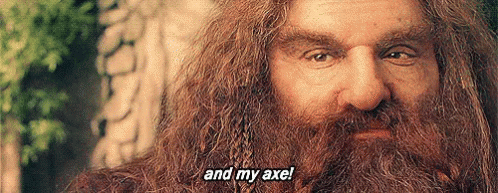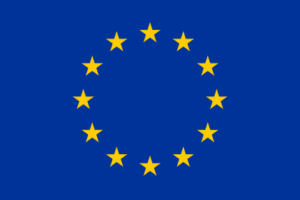In a world….. where we are all exposed to so many facts and figures, it is easy for us to get “lost in the woods”, and become resistant to new information. But a shining beacon to guide people and entice them to take the call to action is storytelling.
Although the art of storytelling is as old as history itself, the use of these approaches in modern science communication and engagement is a relatively recent phenomenon. For a long time, the way we communicate scientific truth has been exclusively with cold hard facts, as it is perceived that data cannot lie, and is not subject to abstract interpretation. But, this only represents a partial truth, and as with other forms of media, nuances can be missed when science is not shared in context.

That is why narrative can play a crucial role in how we discuss and share science. By recontextualizing this information and applying it to either a real-life situation or explaining these concepts through the lens of metaphor, a greater level of understanding can be achieved by those without the extensive knowledge that researchers who have spent their entire lives devoted to understanding have themselves. Applying narratives to scientific research, can help a lay audience relate these concepts to their lived experience and realise the real impacts these issues can have on the world around them.
Within the field of citizen science, storytelling can be used as an integrated tool to help translate the importance of research, inspire and motivate lay people to take action, and communicate the results of a CS project and the potential impact this research might have within the stories of those living everyday lives.
A hero’s journey – Parallels with Citizen Science
The story circle is a concept coined by famous American writer Joseph Campbell, who claimed that all successful narratives throughout history follow the same path, “The Hero’s Journey”, and looking at it, I cannot help but see at least some parallels to how research projects are conducted, especially within citizen science.
Steps along the way include the “call to action”, “meeting mentors”, and “trials and failures”, and in those contexts, I think many of us could feel some affinity to our “hero”.
But, it is important to also note that the final destination is only one of these stories, and every step along the way is a story to itself and that we are not the only characters in these narratives.
Beginnings… Middles and Endings …… Using narratives to inspire, motivate and transform
The easiest way to envisage a story being told within a citizen science project, is perhaps in its beginnings, with coordinators writing up proposals and plans, full of aspirations as to the full potential of the project ahead, which will be presented to would-be funders, and the writing of enticing copy to attract the attention of stakeholders and community leads, who could be tempted to join your quest. Here, creating a narrative and connecting with your audience could be the make or break of your project in these early stages.
However, as with all good stories, projects have a beginning, a middle, and an ending.
The road to a successful outcome in a research project is never smooth. Every trip and stumble along the way can be a story of its own, a lesson to be learned and shared, to help others avoid the same pitfalls along their own journey, and which can provide a wealth of opportunities for mutual learning.
Alongside this, CS initiatives involve contributions from a multitude of trans-disciplinary partners, and societal actors, each with their own voice. These dialogs can also help to shape the tale you tell, and are not bound by the narratives created by those of the author (the project coordinators). Perhaps converting your citizen science story into a “chose your own adventure” book.
It is also important to share the experiences of your citizen scientists, why they decided to participate, and how they have contributed. By giving them the limelight for a little while, you can show your appreciation for the valuable work they do, to help build a community among the project participants and coordinators, and this can also be a fantastic tool to help maintain momentum and motivation throughout the project.
When your project is close to reaching its end, it may also be useful to package the outcomes of your research in ways that are easy to digest and put into real-world contexts, and that show just how these results can be used to impact the communities that the science is meant to serve. The climax of your research and the work done by the project coordinators, stakeholders, and citizen scientists should be celebrated. Your heroes have returned successful, having learned new information, and are ready for their next adventure.
And my Axe…. Tools for effective storytelling

As storytelling techniques become a more widely adopted practice within citizen science research, a number of studies have been conducted to determine how these approaches are beneficial to the field. Listed below are some useful additional reading and resources:
- The Citizen Science Impact StoryTelling Approach (CSISTA) was developed by Wehn et al in their 2021 paper: “Capturing and communicating the impact of citizen science for policy: A storytelling approach”, which details how these narrative practices can be used to help communicate and measure the impact of new environmental policies.
- Storytelling in Citizen Science – Potential for Science Communication and Practical Guideline, written by Hecker, Luckas, and Sieber and presented at the Austrian Citizen Science Conference 2017, provides a useful guide to how these practices can be used to communicate the aims or results of a project and thereby motivate participants and create meaningful links between science and society.
- Storytelling for narrative approaches in citizen science: towards a generalized model, Richter et al 2019 investigates the typology of storytelling in citizen science projects and explore to what extent the tool of storytelling can be conceptualized in the approach of citizen science.
- Scientists as storytellers guide – 3M, Expert advice for STEM communicators on how to make science stories more relatable.
Through citizen science we can help people create new memories and write their own tales about how engaging with science has impacted their lives, which might hopefully entice others to start their own journey into becoming more engaged and scientifically literate members of society, and become the heroes in their own science stories.
The featured image is taken from Story Book Vectors by Vecteezy

